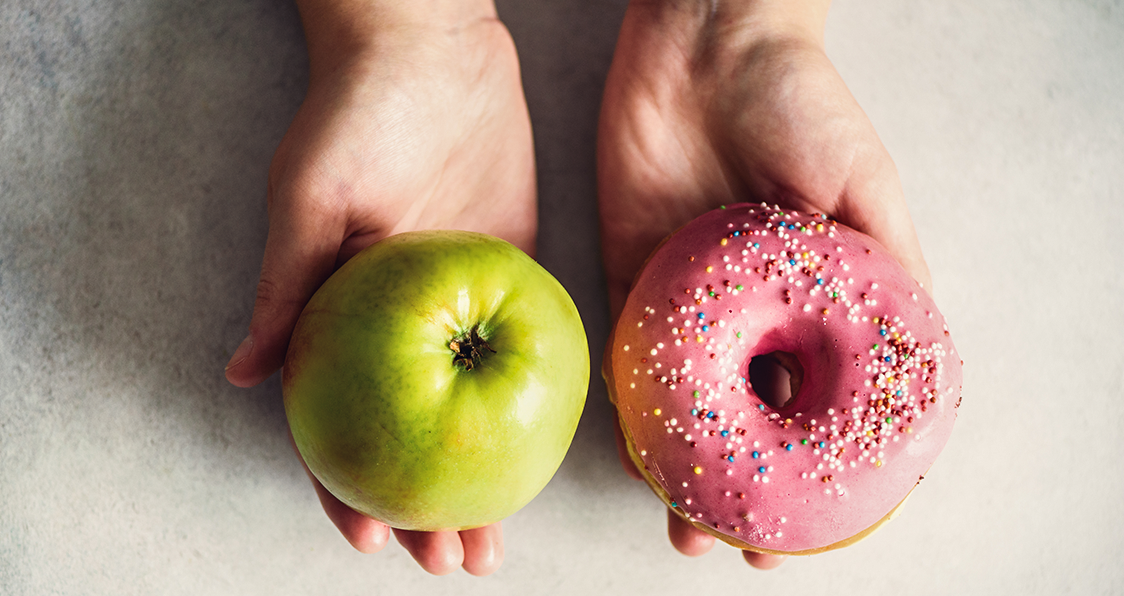
There are many options available for diabetics. However, it is important to choose healthy food based on individual needs and lifestyle. To control blood sugar, a balanced diet is crucial. Legumes have high levels of protein, fiber, as well as high-quality carbohydrate. Soluble fiber is a good source of energy and helps curb hunger. Recent studies showed that legumes had a lower risk of type 2 diabetes and improved blood sugar control.
As a low-carb food, avocados are a great choice for diabetics. Avocados provide healthy fiber and healthy oils. Walnuts contain high levels of omega-3s which is a plus for diabetics. But, you should limit your intake to one cup of walnuts. Chickpeas, which is a legume rich both in fiber and protein, can also be eaten. Because they are high in dietary fibre, they are a great source of protein as well as being a healthy snack.
While spinach is not a favorite, most people do not like the taste of pumpkin. However, beta-carotene can convert to essential vitamin B and be used as a main meal. For added fiber, you can mix the skin with other vegetables if you don't want to eat it. They can be cooked in a recipe and then served as part a meal. For extra protein, mix some quinoa in your favorite soups or smoothies.

Greek yogurt can also be enjoyed by diabetics as a snack. This starchy vegetable can be eaten as a snack or breakfast. A small portion is six to eight grams. You should always read the label to ensure that there are no added sugars. You can also eat fruits in moderation, such as cherries and berries, along with yogurt. Flax seeds are rich in lignans which can help increase insulin sensitivity and lower the risk of developing heart disease.
Sweet potatoes are rich in potassium, fiber and lean proteins. You can cook them and eat them as a snack. Sweet potatoes, although high in carbs and sugar, are ideal side dishes for vegetables and lean proteins. They are also high in magnesium which reduces your risk of getting diabetes and may prevent stroke. They are therefore the best food for diabetics.
Many fruits and vegetables are rich in antioxidants, and they are good sources of fiber. They can be used in salads and smoothies and are low in glycemic index. Greek yogurt can also be used for salads or yogurts. You can even add them to your favorite yogurt. You can use them to make smoothies. These can be used to enhance the flavor of desserts when you prepare fruit salads.
Diabetic diets have to be balanced. Ideally, the best foods for diabetics should be low in sugar, but not in saturated fats, or trans fats. They should not be high in fat but rich in fiber, protein and fiber. A diabetic diet should consist of whole grains and fruits. Healthy fats are an important part of a diabetic diet. These foods can provide you with the health benefits.

For diabetics, a healthy diet includes lots of fruits and veggies. Organic, fresh, and ripe fruit and vegetables are the best. Low-calorie foods are best for diabetics. There are many options for incorporating fruits and veggies into your daily schedule. You can even eat nuts every day. These delicious and healthy foods are great for diabetics. You must be careful about how much sugar you consume to avoid developing diabetes.
Greek yogurt is another option for diabetics. It is very high in fiber, and has very little carbohydrate. It can be enjoyed either as a snack nor as a main dish. It also helps to include a wide variety of whole grains. They contain low-calorie and high-fiber foods. Because they are low in sugar, whole-grain breads can be the best food for diabetics. These breads and pastas are also a good source of fiber.
FAQ
How can my blood pressure be controlled?
The first thing you need to do is find out what causes high blood pressure. Next, take steps that will reduce the risk. This could include eating less salt, losing weight if necessary, taking medication, etc.
Exercise is also important. If you don’t have enough time to exercise regularly, consider walking more often.
Consider joining a gym if your current exercise regimen is not satisfying you. You'll probably want to join a gym where there are other people who share your goals. It is easier to adhere to a fitness routine when someone else will be there with you.
How to measure your body fat
The best way to measure body fat is with a Body Fat Analyzer. These devices are used for measuring the percentage of body fat in people who want to lose weight.
Is being cold good for your immune system.
Cold causes a decrease in immune system strength. This is because white blood cells are less effective at fighting infection. Cold can also make you feel better as your body releases endorphins to your brain, which reduce pain.
What should my weight be for my age and height? BMI calculator & chart
The best way to determine how much weight you need to lose is to use a body mass index (BMI) calculator. The healthy BMI range for a healthy person is 18.5 to 24.9. If you want to lose weight, then you should aim to drop about 10 pounds per month. Simply enter your height, weight and desired BMI into the BMI calculator to calculate it.
This BMI chart shows you if it is possible to identify if you are either overweight or obese.
How do I find out what's best for me?
You must listen to your body. When it comes to your body's needs for exercise, food, or rest, it is the best. You need to be aware of your body and not overdo it. Listen to your body and make sure you're doing everything you can to stay healthy.
Why does our weight change as we get older?
How do I know if my bodyweight changes?
If there are less calories than muscle mass, then weight loss is possible. This means that you must consume more calories than you use daily. Reduced activity is the leading cause of weight gain. Other causes include illness, stress, pregnancy, hormonal imbalances, certain medications, and poor eating habits. If there is more body fat than muscle mass, then weight gain can occur. This happens when people consume more calories than they burn during the day. There are many reasons for this, including overeating and increased physical activity.
Our bodies lose weight because we eat fewer calories than we burn. Regular exercise increases metabolism, which means that we burn more calories per day. But this doesn't guarantee that we'll lose weight. All that matters is whether we're losing weight or gaining muscles. Weight loss is possible if you burn more calories than you consume. However, if we consume more calories than we burn, we end up storing them as extra fat.
As we get older, our movement speed slows down and so we move less. We also tend eat less than we used to. We tend to gain weight. On the flip side, we tend to have more muscle mass so we look bigger than we really are.
Without regularly weighing yourself, it is impossible to gauge how much weight you have lost. There are many ways you can measure your weight. You can gauge your waist size, hips, hips, thighs and arms. Some people prefer to use bathroom scales while others like to use tape measures.
You can track your progress by weighing yourself at least once per week and measuring your waistline every month. To track your progress, you can also take photos every few months of yourself to see how far it has come.
You can also look up your height, weight and body measurements online to determine how much you weigh. If you are 5'10" tall, and you weigh 180 lbs, then you would probably weigh 180 lbs.
Statistics
- Extra virgin olive oil may benefit heart health, as people who consume it have a lower risk for dying from heart attacks and strokes according to some evidence (57Trusted Source (healthline.com)
- The Dietary Guidelines for Americans recommend keeping added sugar intake below 10% of your daily calorie intake, while the World Health Organization recommends slashing added sugars to 5% or less of your daily calories for optimal health (59Trusted (healthline.com)
- WHO recommends consuming less than 5% of total energy intake for additional health benefits. (who.int)
- According to the 2020 Dietary Guidelines for Americans, a balanced diet high in fruits and vegetables, lean protein, low-fat dairy and whole grains is needed for optimal energy. (mayoclinichealthsystem.org)
External Links
How To
What does "vitamin" actually mean?
Vitamins are organic compounds naturally found in food. Vitamins allow us to absorb nutrients from food. Vitamins cannot be made by the body; they must be taken from food.
There are two types if vitamins: water soluble, and fat soluble. Water soluble vitamins dissolve easily in water. These include vitamin C (thiamine), Vitamin B1 (riboflavin), Vitamin B2 (riboflavin), Vitamin B3 (niacin), Vitamin B6 (pyridoxine), Vitamin C, B1 (thiamine), Vitamin B2 (riboflavin), Vitamin B3 (niacin), and Vitamin B6 (pyridoxine). Fat-soluble vitamins can be stored in the liver or in fatty tissue. Vitamin D, E, K and A are some examples.
Vitamins are classified according to their biological activity. There are eight major groups of vitamins:
-
A – Essential for normal growth, and the maintenance of good health.
-
C – essential for proper nerve function.
-
D - Essential for healthy teeth and bones.
-
E - Required for good vision & reproduction
-
K - essential for healthy muscles, nerves, and bones.
-
P - Essential for strong bones and teeth.
-
Q - aids digestion and absorption of iron.
-
R - Required for red blood cell production
The recommended daily allowance (RDA), for vitamins, varies depending upon age, gender, or physical condition. The U.S. Food and Drug Administration (FDA) sets the RDA values.
For adults 19 years and over, the RDA of vitamin A is 400mg per day. Pregnant women require 600 micrograms daily to support fetal development. Children ages 1-8 require 900 micrograms per day. Babies under one-year old require 700 mg per day. Between 9 and 12 years of age, however, this drops to 500 mg per day.
Children between the ages of 1-18 need 800 micrograms per daily for obesity, while children overweight require 1000 micrograms. Children underweight or obese will need 1200 mg per day.
Children 4-8 years old who have anemia must consume 2200 micrograms of Vitamin C daily.
Adults over 50 years of age need 2000 micrograms per day for general health. Because of their higher nutrient needs, women who are pregnant or nursing need 3000 mg per day.
Adults over 70 require 1500 micrograms each day, since they lose around 10% of their muscle mass every decade.
Women who are pregnant or lactating need more than the RDA. Pregnant women require 4000 micrograms daily during pregnancy, and 2500 micrograms every day after birth. Breastfeeding mothers need 5000 micrograms per day when breast milk is being produced.